Seoul Former Russian Legation (서울 구 러시아공사관)
16.4Km 2020-06-18
21-18, Jeongdong-gil, Jung-gu, Seoul
+82-2-3396-5882
The Russian Legation was built in a Renaissance style in 1890. Russian architect, A. J. Scredin Sabatine designed the structure. In 1895, during the Joseon dynasty, the Eulmisabyeon Incident took place as a show of force by the Japanese.
Empress Myeongseong-hwanghu was emerging as a strong figure in Korea at a time when a power struggle between Japan, China, Russia, and other powers were taking place. Japanese Minister, Miura Goro saw her as a threat and ordered her assassination. After hearing news of the Empress’s assassination, King Gojong and the Crown Prince sought refuge in the Russian Embassy for one year.
After 1945, the Soviet Union took over the embassy until it was almost completely destroyed by a fire during the Korean War [1950~1953]. The only remaining parts of the building are the tower and basement areas. The building was restored to its current condition in 1973 and is now enjoyed by many as a public park.
Seochon Village (서촌마을)
16.4Km 2024-12-02
45 Pirundae-ro, Jongno-gu, Seoul (Nuha-dong)
Seochon Village is the name given to the area to the west of Gyeongbokgung Palace. It is a historic village, home to old shops and hanok buildings that have stood the test of time. Korean traditions and contemporary sensibilities coexist within Seochon Village’s maze-like alleyways, creating the unique ambience that makes the district so beloved. One can find shops, guesthouses, cafés, and restaurants in the village.
Larva Town (라바타운)
16.4Km 2022-12-23
1, Gyeonghuigung 1-gil, Jongno-gu, Seoul
+82-70-4609-6492
Larva Town is divided into areas of three different themes: TUBAn Yard, TUBAn Goods, and Cafe Wingcle. TUBAn Yard greets visitors with animation character Larva dressed up as a gatekeeper from the Joseon dynasty along with other amusing sculptures that serve as excellent props for taking souvenir photos. The yard is open to public, welcoming any passerby to stop by and relax. As for TUBAn Goods, the shop is filled with character merchandise targeted towards consumers of diverse age range. Featured characters include TUBAn's iconic Larva, Dinocore, and Wingcle. After looking around TUBAn Yard and TUBAn Goods, visitors can stop by Cafe Wingcle where they can enjoy a cup of coffee with dessert surrounded by adorable Wingcle and friends.
Ground Seesaw Seochon (그라운드시소 서촌)
16.4Km 2023-01-17
18-8, Jahamun-ro 6-gil, Jongno-gu, Seoul
Ground Seesaw is a cultural complex located in Seochon, Jongno presented by Media & Art, an exhibition production company, and designed by SoA, an architecture firm, and Loci Studio, a landscaping studio. Visitors are able to check out a variety of exhibits at Ground Seesaw Seochon.
Bugak Skyway Palgakjeong Pavilion (북악스카이 팔각정)
16.4Km 2024-12-31
267 Bugaksan-ro, Jongno-gu, Seoul
Bugak Skyway Palgakjeong Pavilion exudes a tranquil, serene beauty regardless of the season. The pavilion, which sits on Bugaksan's 1,652,900 square meter summit at an altitude of 345 meters, was built in a traditional Korean-style and became a popular attraction within the city. There are also spaces for visitors to enjoy food and drinks.
Oliva Garden (올리바가든)
16.4Km 2021-05-11
16, Jahamun-ro, Jongno-gu, Seoul
+82-2-733-3056
It is an Italian restaurant featured in a popular Korean drama. The best menu at this restaurant is steak. This Korean dishes restaurant is located in Jongno-gu, Seoul.
Niwa (니와)
16.4Km 2016-12-08
22, Ichon-ro 75-gil, Yongsan-gu, Seoul
+82-2-790-0917
Niwa is an authentic Japanese izakaya, serving alcoholic beverages and food. In order to stay true to tradition, Niwa works in cooperation with an izakaya chain in Hiroshima, Japan, creating a cooking system that realizes genuine Japanese tastes. Customers are able to experience Japan at Niwa, without even visiting the country. The restaurant is constantly working to develop new, delicious menu items.
CheongKwanJang - Hangangno Branch [Tax Refund Shop] (정관장 한강로)
16.4Km 2024-04-18
1F, Junggwanjang Hangang-ro Branch, 159-1, Hangang-daero, Yongsan-gu, Seoul
-
Sejong Village Food Street (세종마을 음식문화거리)
16.4Km 2025-06-17
Chebu-dong, Jongno-gu, Seoul
Previously known as Geumcheongyo Market, it was officially named Sejong Village Food Street in 2011, as King Sejong was born in this village. The street is full of lively energy and features both long-standing restaurants, also known as nopo in Korean, and recently established trendy eateries. Its convenient location and inviting atmosphere make it a popular place to visit.
The Street in front of Cheongwadae (The Blue House) (청와대 앞길)
16.4Km 2020-03-21
Gungjeong-dong, Jongno-gu, Seoul
+82-2-120
The street in front of Cheongwadae (the Blue House) is open to the public and includes both Hyoja Samgeori (Hyoja three-way intersection) in Hyoja-dong and Palpan Samgeori (Palpan three-way inetersection) in Palpan-dong. When walking along Hyoja-ro Road from Gyeongbokgung Station, sights include a fountain, Mugunghwa Garden, Yeonmugwan Hall, and Daegogak & Yeongbingwan Hall.
Cheongwadae Sarangchae consists of one basement level and two above-ground levels, including Korean Culture Exhibition Hall, Planned Exhibition Hall, a gift shop, and rest area (Korean Food Promotion Hall, Café) on the first floor and Cheongwadae Hall and Haengboknuri Hall on the second floor. Daegogak Hall houses a book donated to former president, Kim Young-sam for expressing the past spirit of Sinmungo (Petitioner's drum from Korean History). Yeonmugwan Hall is a martial art and fitness center for guards. Mugunghwa Dongsan, formed after the ansa (Safe House) was demolished in 1993, includes a well, mock fortress, and rest area. Located behind Mugunghwa Dongsan is Apostolic Nunciature in Korea and Chilgung (Seven Palaces).
At the beginning of the street in front of Cheongwadae, dense trees and beautiful flower gardens decorating both sides of the road make it a nice place for taking a walk. The area from the north gate of Gyeongbokgung Palace, Chunchumun, to the main gate of Gyeongbokgung Palace, Geonchunmun, is Samcheongdong-gil Road. This road is home to many art galleries, including Kukje Gallery, Growrich Gallery, Gallery Hyundai, and Jin Art gallery, in the area of Hyoja-ro.
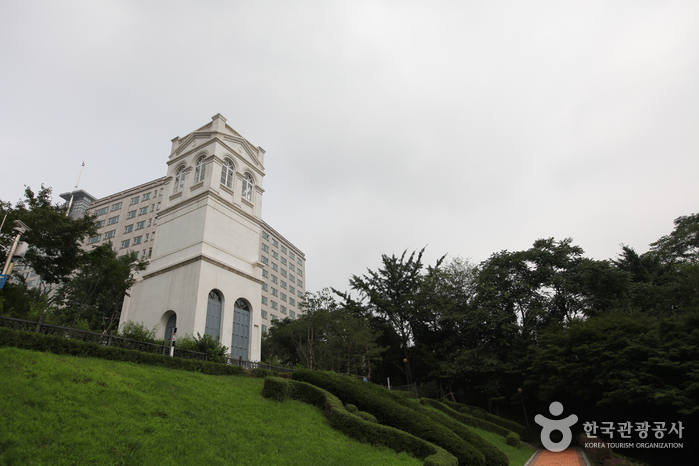
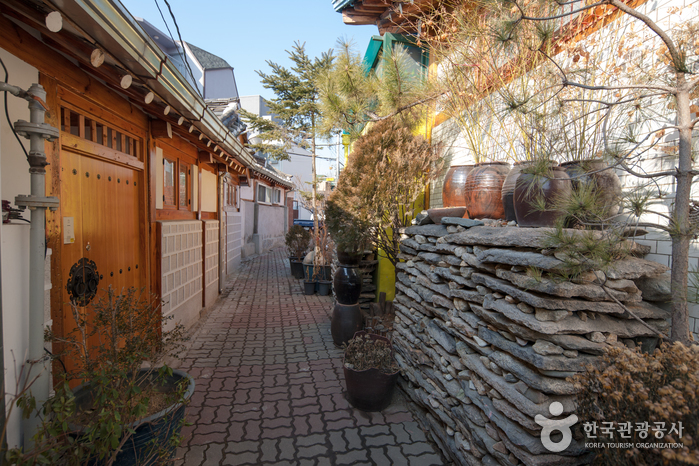
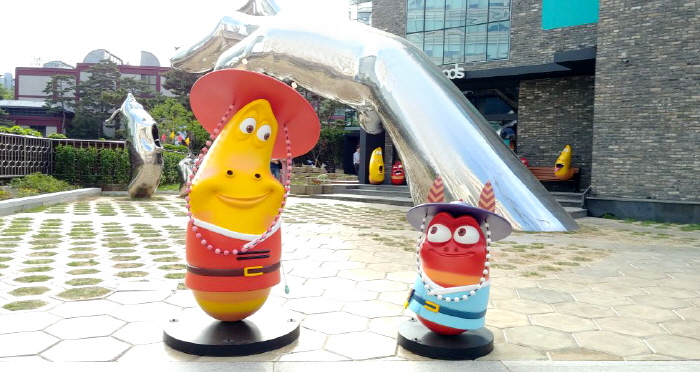

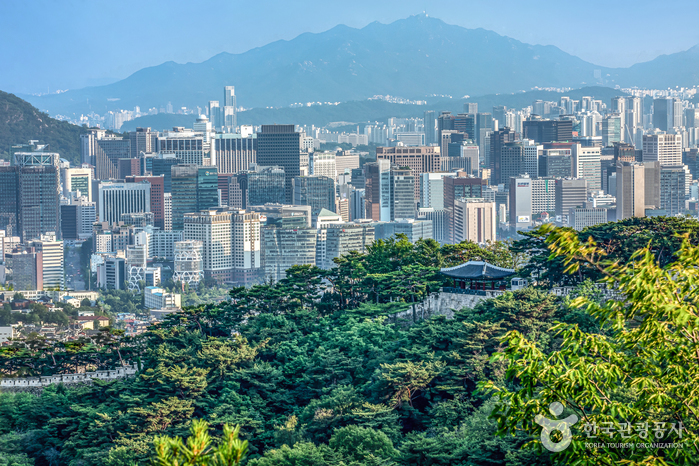
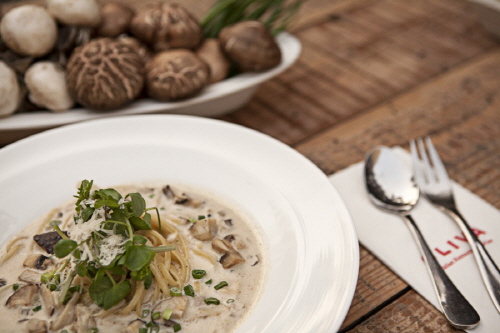
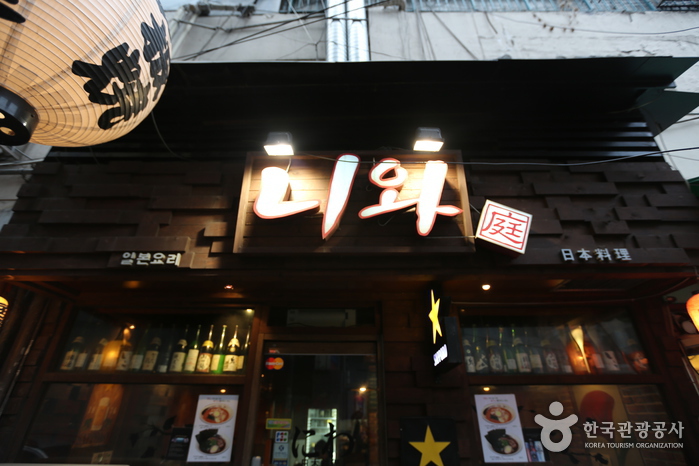
![CheongKwanJang - Hangangno Branch [Tax Refund Shop] (정관장 한강로)](http://tong.visitkorea.or.kr/cms/resource/31/2889731_image2_1.jpg)
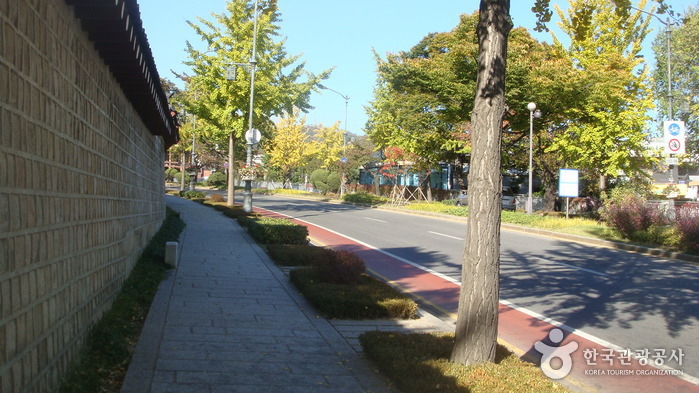
 English
English
 한국어
한국어 日本語
日本語 中文(简体)
中文(简体) Deutsch
Deutsch Français
Français Español
Español Русский
Русский